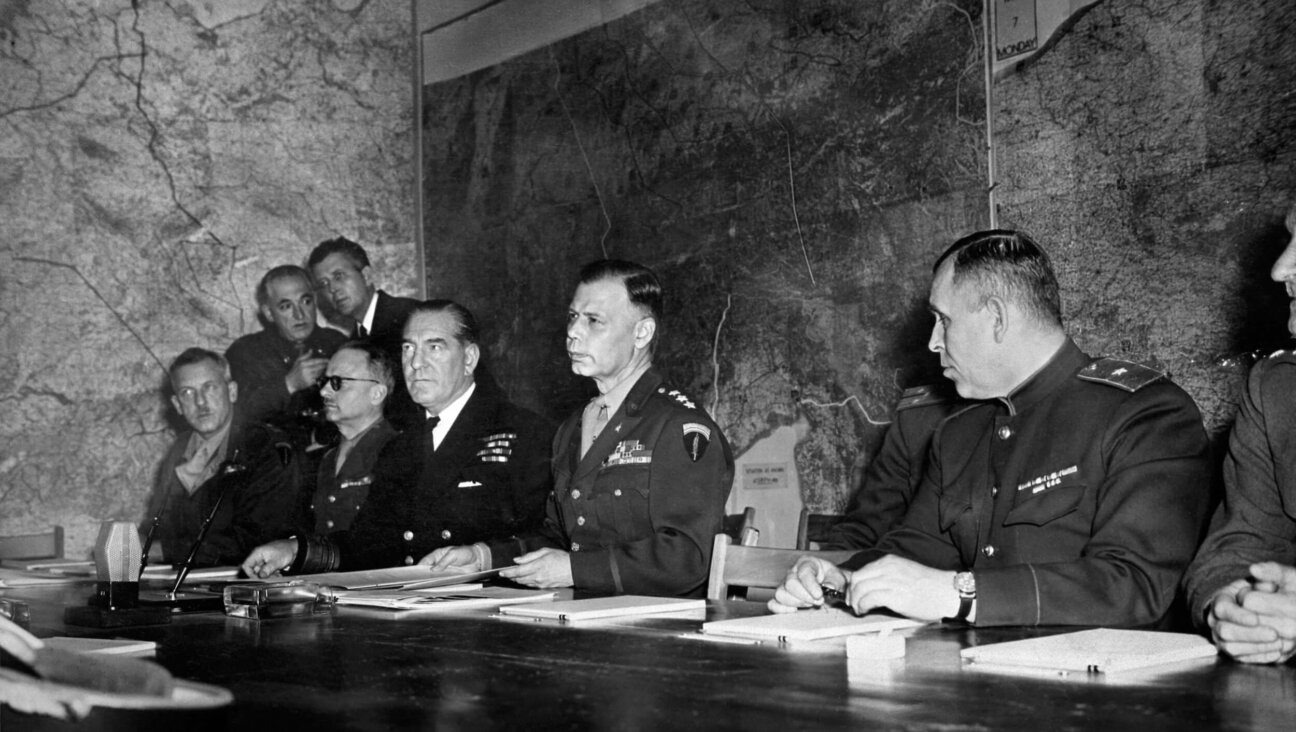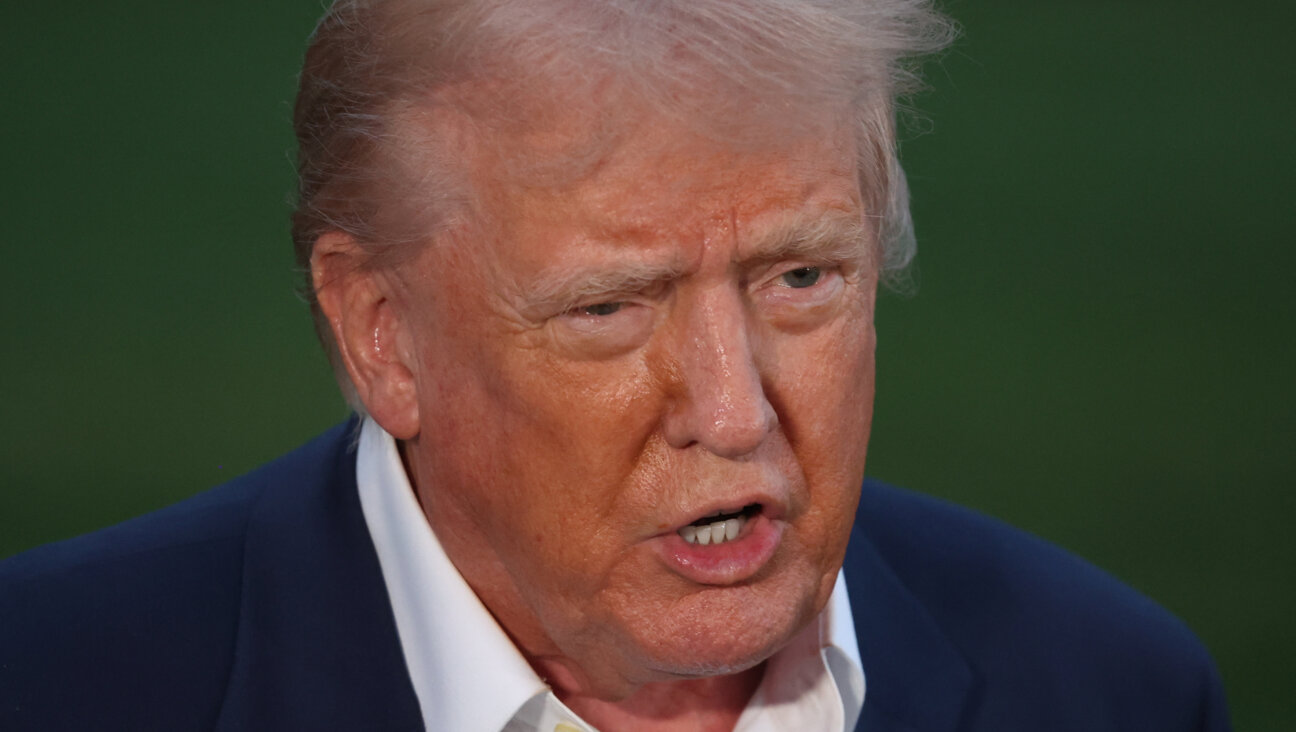The (Chabad) Rebbe’s Army

Image by chabad
(JTA) — So far as I know, there are two major roll calls each year in the Jewish world. One takes place each spring at the annual AIPAC convention in Washington, in which the names of hundreds of members of Congress are read aloud from the rostrum. The other took place last night, at the annual gathering of Chabad emissaries, or shluchim, in Brooklyn.
The former is a display of political power, showcasing AIPAC’s ability to get more than half the members of the world’s most powerful legislative body to show up and demonstrate their pro-Israel bona fides. The second is a show of another kind of power, the spiritual strength of a group of rabbis who sacrifice much in terms of comfort and convenience to connect thousands of far-flung Jews to their heritage.
At a time of angst in the Jewish world over the falloff in Jewish affiliation, the ranks of Chabad shluchim continue to swell. There are currently more than 4,500 around the world (twice that number if one counts, as one should, the rabbis’ wives). More than half of those have been dispatched in the nearly two decades since the death of the Lubavitcher Rebbe, Menachem Mendel Schneerson, whose eyes peered down on the gathering from a massive portrait above a rotating speakers’s podium.
The bulk of those shluchim assembled Sunday night in a marine terminal along the Brooklyn waterfront for their annual banquet, the capstone of a days-long conference, or kinus. Emissaries traveled from such remote locales as the Cayman Islands, Laos, San Martin, South Korea and Martinique, arriving at the cavernous warehouse by bus, taxi, subway and limousine. (So far as I could tell, I was the only attendee who arrived by bicycle.) And their strength was evident not only by the sea of bearded men in black suits and hats, but by the presence of their benefactors — billionaire Israeli diamond magnate Lev Leviev and the financier George Rohr foremost among them — political figures like Joe Lieberman and the former CIA director James Woosley, and representatives of other major Jewish streams, including the Union for Reform Judaism’s president, Rabbi Rick Jacobs.
The convention theme was zarach b’choshech or, a phrase from the Psalms meaning “radiate light into darkness,” and the speeches and videos were replete with metaphors of luminescence — sparks of yiddishkheit ignited, torches lit, Jewish souls set aflame. Rare in the Jewish world is a group as fired up and self-assured as this one.
Of course, the recent Pew findings hung over the kinus as they have over other recent Jewish confabs. Rabbi Moshe Kotlarsky, the head of the Chabad educational wing Merkos L’Inyonei Chinuch, called it a “clarion wake-up call.” But unlike other sectors of the Jewish institutional world, which are struggling to formulate a workable strategy to stem the tide of apathy and assimilation, the Chabad shluchim know exactly what their mission is. In the words of Rabbi Dov Greenberg, the Chabad emissary at Stanford University, it is to act as shepherds for wayward Jewish souls, persuading them to participate in some act of Jewish ritual, however small and fleeting, in the hopes of igniting a passion for Jewish observance. And if that passion isn’t ignited, that’s fine too. The power is in the act itself.
As an academic working on a study of Chabad’s impact on campus told me, the standard metrics of Jewish engagement don’t easily apply to Chabad’s outreach efforts. Chabad rabbis are happy if a man puts on teffilin once, or a woman lights sabbath candles. Affiliation, membership, financial support — these are all welcomed. But if a Chabad rabbi can persuade one Jew to do a single mitzvah, it’s a success.
“You do one mitzvah…,” Kotlarsky said. “And you can change the world.” He then announced an initiative to get each emissary to reach 20 people in their communities they had never had contact with before. To what end? To get them each to do a single mitzvah.
To believe in the power of that kind of act one has to — well, believe. In the professionalized ranks of Jewish institutional life, the power of single ritual acts don’t register very loudly — at least not with the academic studies that evaluate the effectiveness of Jewish initiatives. Private devotions are often less valued than public (and more easily measurable) ones, like synagogue membership or Hebrew school attendance.
For Chabad, the measure is the individual, not the institution. And there’s a level of uncompromising absolutism in their rhetoric that would make most Jewish organizations blush.
Kotlarsky thundered that even if an emissary reached every Jew in a city, except for one, the mission would not have been fulfilled.
“Until we reach each and every Jew in the community, in the state, in the city, in the country that shliach is charged with, we cannot sit back and relax,” he said.
The Forward is free to read, but it isn’t free to produce

I hope you appreciated this article. Before you go, I’d like to ask you to please support the Forward.
Now more than ever, American Jews need independent news they can trust, with reporting driven by truth, not ideology. We serve you, not any ideological agenda.
At a time when other newsrooms are closing or cutting back, the Forward has removed its paywall and invested additional resources to report on the ground from Israel and around the U.S. on the impact of the war, rising antisemitism and polarized discourse.
This is a great time to support independent Jewish journalism you rely on. Make a gift today!
— Rachel Fishman Feddersen, Publisher and CEO
Support our mission to tell the Jewish story fully and fairly.
Most Popular
- 1

Culture Cardinals are Catholic, not Jewish — so why do they all wear yarmulkes?
- 2

Fast Forward Ye debuts ‘Heil Hitler’ music video that includes a sample of a Hitler speech
- 3

News School Israel trip turns ‘terrifying’ for LA students attacked by Israeli teens
- 4

Fast Forward Student suspended for ‘F— the Jews’ video defends himself on antisemitic podcast
In Case You Missed It
-

Yiddish קאָנצערט לכּבֿוד דעם ייִדישן שרײַבער און רעדאַקטאָר באָריס סאַנדלערConcert honoring Yiddish writer and editor Boris Sandler
דער בעל־שׂימחה האָט יאָרן לאַנג געדינט ווי דער רעדאַקטאָר פֿונעם ייִדישן פֿאָרווערטס.
-

Fast Forward Trump’s new pick for surgeon general blames the Nazis for pesticides on our food
-

Fast Forward Jewish feud over Trump escalates with open letter in The New York Times
-

Fast Forward First American pope, Leo XIV, studied under a leader in Jewish-Catholic relations
-
Shop the Forward Store
100% of profits support our journalism
Republish This Story
Please read before republishing
We’re happy to make this story available to republish for free, unless it originated with JTA, Haaretz or another publication (as indicated on the article) and as long as you follow our guidelines.
You must comply with the following:
- Credit the Forward
- Retain our pixel
- Preserve our canonical link in Google search
- Add a noindex tag in Google search
See our full guidelines for more information, and this guide for detail about canonical URLs.
To republish, copy the HTML by clicking on the yellow button to the right; it includes our tracking pixel, all paragraph styles and hyperlinks, the author byline and credit to the Forward. It does not include images; to avoid copyright violations, you must add them manually, following our guidelines. Please email us at [email protected], subject line “republish,” with any questions or to let us know what stories you’re picking up.















